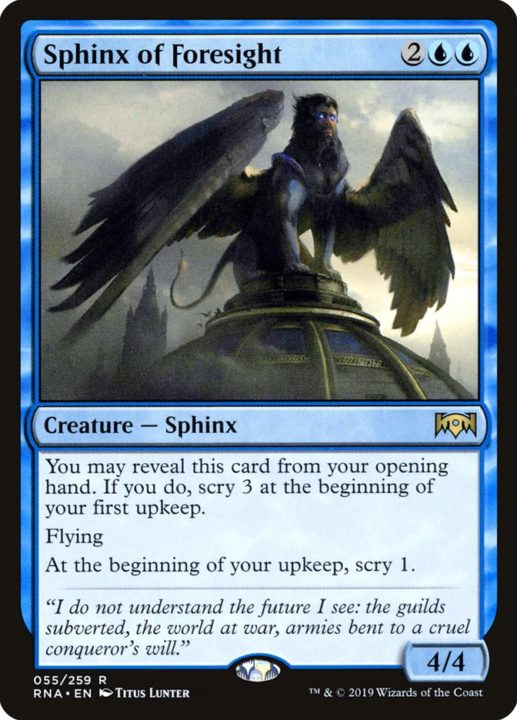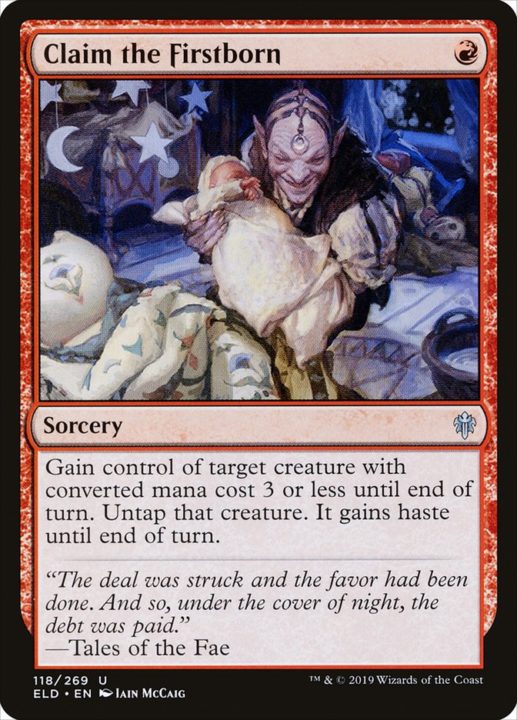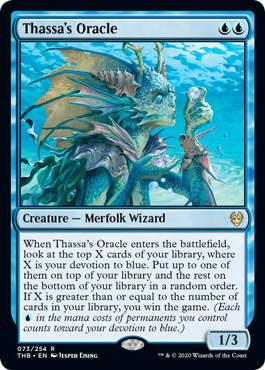Welcome to our new series, MTG Mindset! Many of us (myself included) want to improve as Magic players, but there’s more to that than understanding decks and mategames. Magic is a mental game above all else, and your mindset can often determine the outcome of your matches. The first step of the journey is something that I see a lot of players both new and seasoned struggling with: Variance.
What is Variance?
People throw around the word “variance” a lot, but what does it actually mean? The mathematical definition is “the expectation of the squared deviation of a random variable from its mean.” In other words, variance measures how far a set of numbers deviates from the average value. For example, if you have 21 lands in your 60-card deck, you’d expect to draw seven lands in the top 20 cards. Any number of lands other than seven has varied from the mean. Varying from the mean isn’t necessarily a bad thing — maybe your hand is full of the more expensive spells in your deck, or perhaps you need to be able to cast multiple spells in one turn. In either of those cases, drawing a higher-than-average number of lands may pay off.

If a player has 21 lands in their deck, that means they have 39 spells. And if the mean for lands in the top 20 cards is seven, we can conclude that the mean for spells is 13. Assuming your deck is fully randomized, here’s how likely you are to draw each of the following numbers of lands:
4: 5.4%
5: 12.2%
6: 19.5%
7: 22.5%
8: 19%
9: 11.8%
10: 5.3%
When players experience bad variance — or their opponents experience good variance — they tend to focus on it. You may hear players saying that they flooded when they drew nine lands and eleven spells over the course of a game. They aren’t wrong: they did draw more lands than than the average. But, as you can see, you’re almost as likely to draw nine lands as you are to draw five; less than five and greater than nine are the only true outliers here.
Magic is a Game of Math
Everything in Magic involves math — whether you’re deciding whether to mulligan, playing around a card your opponent might have, or even simply trying to figure out if an attack is worth it. Naturally, the math is going to be different depending on what you play. For example, a deck with 21 lands and no way to draw extra cards may have to think twice about keeping a two-land opening hand. Meanwhile, a 21-land deck with cantrips will have a much easier time functioning with two lands.
The curve of the deck you’re playing also matters. Standard Mono-Red Aggro, for example, has an average converted mana cost of 2.25, which is even a bit high because I included the converted mana costs of Light Up the Stage and Embercleave. Jeskai Fires, on the other hand, has an average converted mana cost of about 3.63.

Two lands in most Mono-Red Aggro hands will be more than sufficient, as you have about a 75% chance to draw a third land in the top three cards. (Should you miss that third land, it’s likely that you’ll have drawn something you can cast with just two lands.) But Jeskai Fires needs to resolve Fires of Invention to enact its game plan, so it’s imperative that they have four mana on turn four. When Jeskai Fires keeps a two-land hand on the play, you have about a 46% chance of having four lands on turn four, and a 65% chance on the draw. Temples help, of course, but it’s also very likely you won’t be able to make your signature play in time.
It’s also good to do some quick calculations to determine the likelihood of your opponent having a specific card. Say you’re in a position where your opponent needs to have Shatter the Sky on turn four and then again on turn six because you’ll be able to present lethal again after rebuilding. They have a 53% chance of drawing the first copy by turn four, but only a 17.5% chance to draw the second copy by turn six. You do have to consider what other cards may change the equation (blockers, life gain, and removal spells come to mind), but if your opponent has to draw the second copy of a card early in the game to live, then you have a pretty safe line. However, if you believe your chance of winning the game is lower than your opponent’s chance of having it, you should consider a different play.
Variance and Risk
Risk is also an inherent part of Magic. Even the safest-looking plays can go wrong if something unexpected happens.
Here’s a scenario you could easily run into in Standard: You’re facing a Rakdos Sacrifice player who is at eight life and who has no cards in hand. You have four life and ten mana, and you draw a Hydroid Krasis for the turn. There are two possible plays you can make here: cast your Hydroid Krasis for X=8 and have a lethal attacker for the next turn, or cast Hydroid Krasis for less than X=8 to avoid dying to a Claim the Firstborn from your opponent.

Neither play is correct 100% of the time, but some quick math will help you determine which gives you a higher chance of winning. Consider how many copies of Claim the Firstborn you believe are in their deck, how many copies they’ve cast so far, how many cards are left in their deck. You’ll also need to factor in any other detrimental cards they could have, like Act of Treason. And remember: even if you make the play that gives you the highest chance to win, your opponent may still draw the card that foils your plan. Hindsight is 20/20, after all.
Variance Works Both Ways
There’s only so much you can control when it comes to variance in Magic. You can play more copies of essential cards or add cards to your deck that allow you to find lands or draw cards. But at the end of the day, variance can work with you or against you; sometimes you run hot, and sometimes you run cold. Variance affects both you and your opponent; one of you might get lucky, or maybe you’ll both struggle to draw the right balance of lands and spells.

Remembering this is one of the keys to staying level-headed when you play Magic competitively. Success at long tournaments isn’t just about having a good deck and playing well — it’s also about keeping your head in the game and not letting variance get to you. It’s easier to remember the times you’ve drawn poorly than it is to remember the times you got lucky; we’ll be covering confirmation bias in the next installment of this series.
Until then, focus on controlling what you can and not worrying about the things you can’t. See you next time!

Michael Rapp is a Modern specialist who favors Thoughtseize decks. Magic sates his desire for competition and constant improvement.

